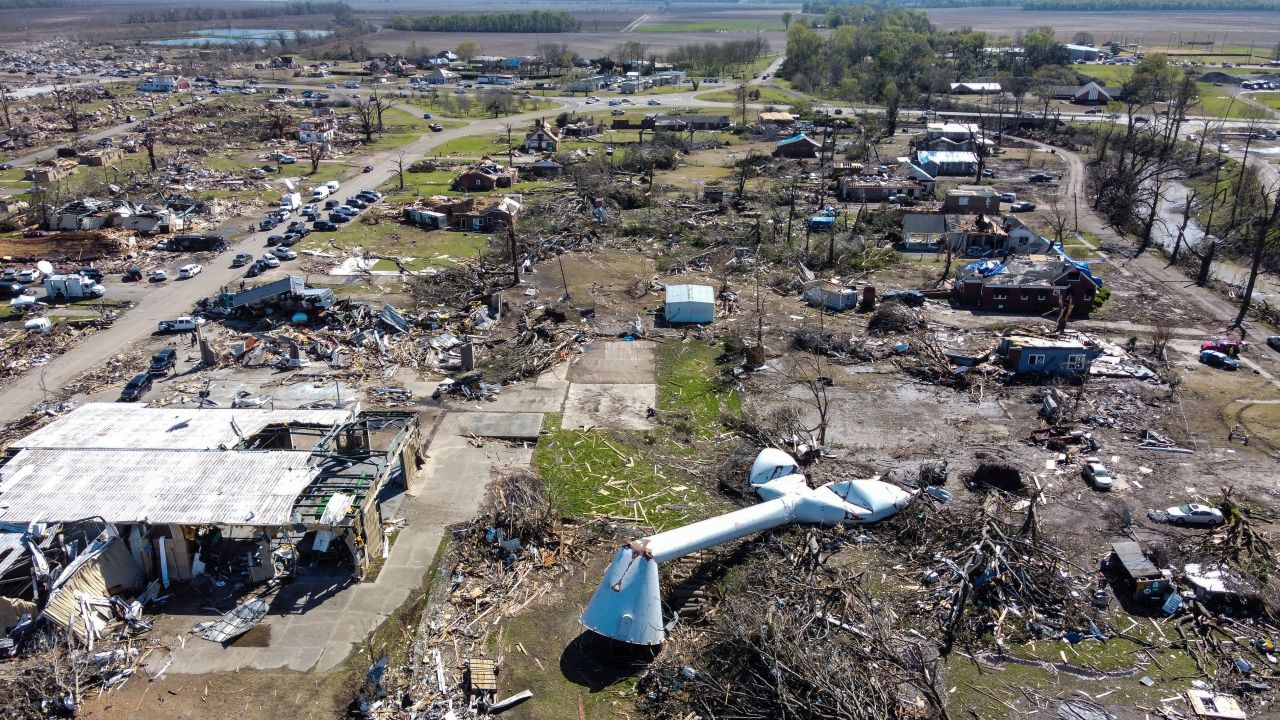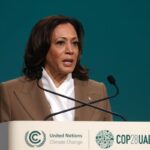
People of color in the US face heightened risks of harm from climate-induced disasters. Now, non-profits are pushing to remedy that disparity with more equitable approaches to disaster preparedness, response and recovery.
“Until we really address the root issues of climate injustice, we’re going to continue to see a disproportionate impact as it relates to disasters in Black and historically excluded communities,” said Abre’ Conner, Director of Environmental and Climate Justice for the NAACP.

Rolling Fork, Mississippi suffered massive damage from a powerful tornado on March 24.AFP/Getty Images
The unequal toll of climate disasters
A report by the EPA’s Office of Atmospheric Programs looked at four vulnerable social groups: people living on low-income, racial minorities, those with no high school diploma, and seniors over age 65. Of those four groups, the study found minorities are most likely to live in areas projected to be impacted by climate change.
Moreover, Black people are 40% more likely than non-African-Americans to live in areas with the highest projected increases in mortality rates due to changes in extreme temperatures.
It’s a dire warning for the future, based on an inequitable past.
Many marginalized people, Black in particular, have faced socioeconomic factors that relegate them to living in environmentally hazardous areas or substandard housing structures. So, when a natural disaster hits, they are ill-equipped to withstand the impact.
That was the situation this past March 24 when a severe tornado leveled much of the Black-majority rural town of Rolling Fork, Mississippi, killing 26 people. Racial disparities existed in Rolling Fork for decades. Many residents there were poor, had low access to information or internet service, were priced out of insurance coverage, and lived in mobile homes that weren’t retrofitted to withstand severe weather conditions. With the nearest tornado shelter over 15 miles away, it set the perfect storm to leave people displaced and scrambling for aid and assistance, which was very slow to arrive.
“The tendency is to ignore and exclude, and that’s a violation of human rights,” said Chauncia Willis, CEO and founder of the Institute for Diversity and Inclusion in Emergency Management (I-DIEM).
Willis’ group deploys equity response teams before and after disasters to help community organizations integrate equity into all facets of disaster policy and practices. She started I-DIEM after spending over 14 years in disaster management.
“I’ve witnessed the disparities, and it hits a little different when the people look like you,” Willis said in an interview with CNN.
Almost three weeks after the tornado, Rolling Fork’s mayor said about 500 people – roughly a third of the town’s population— remained displaced, leaving victims with questions and concerns. To provide some answers, FEMA, MEMA (Mississippi Emergency Management Agency), the Small Business Administration, and the American Red Cross are holding a series of town halls, the first of which took place Tuesday at South Delta Elementary School.
Housing is a major concern at the present. “It wasn’t just Rolling Fork; it was all of those other communities surrounding that were also impacted by the tornado,” said Willis. “That’s going to be the difference between life and death in the future.”
The future is concerning; marginalized communities historically endured long-term effects from disasters.
Source: cnn





